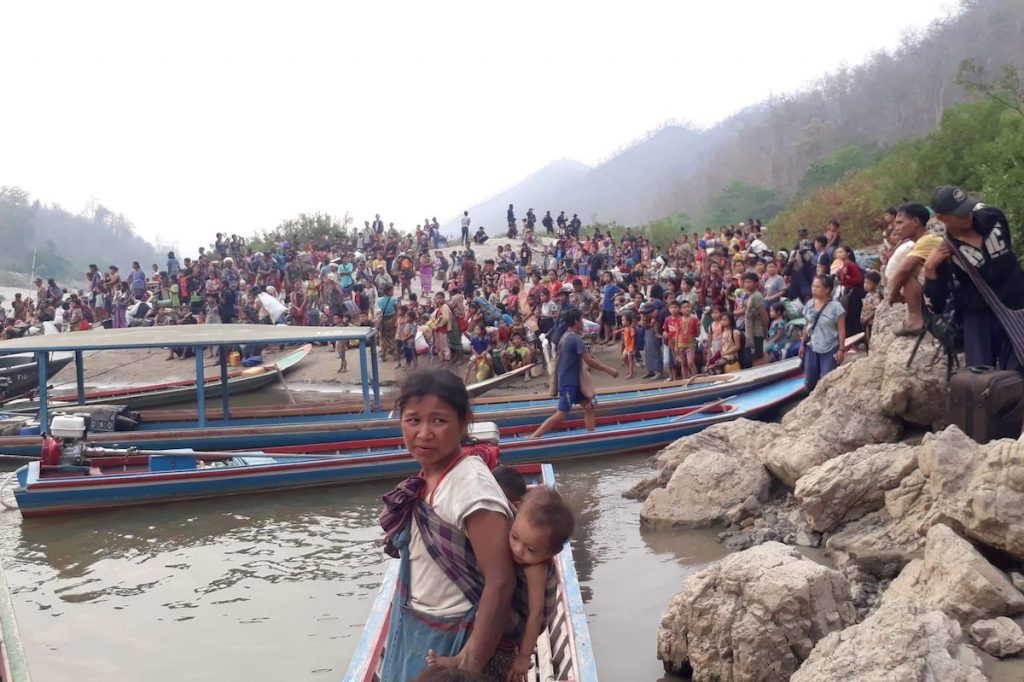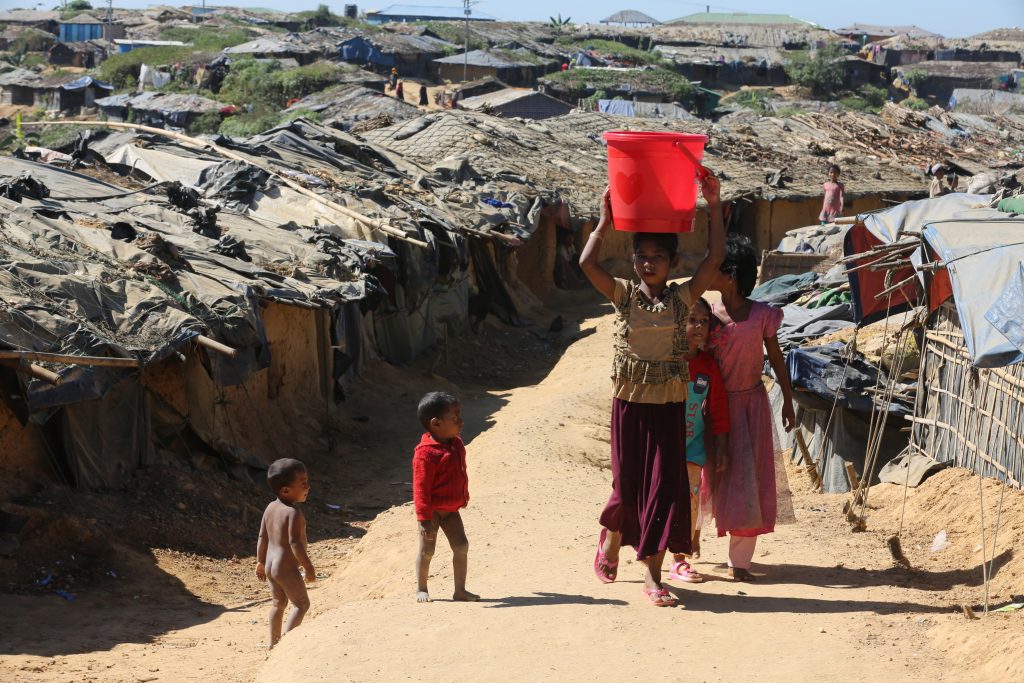Advocacy group Fortify Rights has raised concerns over Thailand’s new National Screening Mechanism for foreign asylum seekers that was launched Friday, September 22.
The group said it has found “several deficiencies” in the criteria that the screening mechanism will use to consider eligibility for protection.
LiCAS.news interviewed Patrick Phongsathorn, Senior Advocacy Specialist at Fortify Rights, to further discuss the new asylum program and Thailand’s migration and refugee situation.
Phongsathorn has previously worked as a consultant focusing on labor migration with the International Organization for Migration (IOM) in Timor-Leste.
He has also served as an Assistant Reporting Officer with the United Nations High Commissioner for Refugees (UNHCR) in Lebanon, and most recently, was an advisor on international partnerships at the Khonthai Foundation in Thailand.
Q: Before tackling Thailand’s new National Screening Mechanism, may we ask you about the overall image of the country’s migration and refugee situation? What is the role of Thailand for many migrants and refugees across the region and how important is that role? How does Thailand’s present status (non-party) to the 1951 U.N. Convention Relating to the Status of Refugees or its 1967 Protocol affect this?
A: Thailand is a hub for migrants and refugees in the region. According to Thailand’s Foreign Workers Administration Office, there are currently more than 2.6 million official migrant workers in Thailand, the majority of whom are from Myanmar. For many decades, Thailand has also hosted more than 90,000 ethnic minority refugees from Myanmar in nine refugee camps along the border.
A further 40,000 have sought safety in Thailand at various points since the military coup in Myanmar. As well as this population, there are also around 5,000 refugees from various countries including China, Syria, and Afghanistan – these individuals usually reside in cities such as Bangkok, and are therefore commonly referred to as “urban refugees”.
Thailand is an important source of economic opportunity for the millions of migrant workers who decide to come here. Equally, the Thai economy has become reliant on relatively cheap and flexible migrant workers. For refugees, Thailand is a safe haven from the horrific human rights abuses many of them have faced. Their lack of legal status in Thailand however leaves them vulnerable to abuses at the hands of unscrupulous employers and corrupt officials.
Although Thailand is not a state party to the 1951 Refugee Convention or its 1967 Protocol, international and domestic law provides certain protections for refugees in Thailand. One such protection is protection from forced return to situations where refugees may face torture or other forms of ill-treatment. This is known as the principle of non-refoulement. This principle is found in international law and in Thailand’s own anti-torture law which came into force last year. Unfortunately, since the coup in Myanmar, Thai authorities have not always respected this principle and Fortify Rights has documented instances of forced return or refoulement.

Q: The new National Screening Mechanism has been implemented recently. What limitations and challenges you can see in this asylum program?
A: The Thai government announced the creation of the National Screening Mechanism (NSM) in December 2019 as a new process to identify and potentially protect refugees in Thailand. After years of delay, the mechanism finally came into effect on September 22 of this year.
Despite the initial promise of the NSM, what has resulted is a mechanism that does not meet international standards for refugee protection and faces significant limitations and challenges in this regard. One major problem is that the NSM will automatically “screen out” from consideration all official migrant workers, preventing them from being able to switch status in-country and arbitrarily denying them protection under the mechanism. The NSM applies the same treatment to the 90,000 ethnic minority refugees who, given the conflict raging in Myanmar’s Karen and Karenni States, have very legitimate reasons for wanting to seek protection under the NSM.
Another significant challenge is that the NSM provides the Thai authorities with a significant ability to deny protection to individuals on “national security” grounds. Individuals denied protection on the grounds of national security will not be allowed to appeal this decision and will not be able to know the reasons why they are considered threats to national security. In the past, “national security” has commonly been used to deny other forms of protection to Rohingya, North Korean, and Uyghur refugees – Fortify Rights has significant concerns that this will also be the case with the NSM.
While national security may justify the expulsion of a refugee or other measures against them, the Refugee Convention provides that judicial safeguards must be met, including the right to appeal or review the decision. Furthermore, the principle of non-refoulement continues to apply in these instances, and individuals denied protection must still not be sent back to a country where they may face torture or other ill-treatment.

Q: What are your recommendations to ensure that the program or policy aligns with international human rights law and standards?
A: Fortify Rights recommends that the Thai government re-draft the regulation underpinning the NSM to ensure that it meets international standards and allows for the broadest possible coverage of protection. Thailand should also consider signing and ratifying the 1951 Refugee Convention and its additional protocol, to ensure a much more holistic and comprehensive approach to refugee protection than we have seen thus far. Finally, the new Thai government should publicly commit to the principle of non-refoulement, and act to end the harmful and abusive practices against refugees that Fortify Rights and others have documented.
Q: Tell us about Fortify Rights. What is the organization’s core program?
A: Fortify Rights works to ensure human rights for all. We are currently active in four countries in Asia – Thailand, Malaysia, Myanmar, and Bangladesh – where we apply an innovative three-pronged theory of change to human rights challenges.
Firstly, we investigate human rights abuses. We conduct in-depth, ground-breaking research into human rights violations and support survivors, eyewitnesses, and others to contribute to the fact-finding process. Secondly, we meet with senior government officials, high-level U.N. representatives, and others to discuss the findings of our evidenced-based research and potential solutions to address human rights concerns. Finally, we partner with human rights defenders and affected communities to support local-led, collective responses to human rights violations.
We have found, over the past ten years, that when these three elements are combined, we have been able to create concrete, progressive changes in the societies where we’re working.

Q: Amidst the global situation of migrants and refugees, how can other sectors extend aid and help address the crisis, especially the Catholic Church?
A: Indeed, we are in the midst of a global refugee crisis where more people are displaced than at any time since the Second World War. In the face of this crisis, we have unfortunately seen political figures turning to hateful and inflammatory rhetoric aimed at scapegoating refugee and migrant communities. I think what we can all start off by doing is rejecting wholeheartedly this kind of rhetoric. We must understand that refugees are just regular people who have had to flee their countries for no fault of their own – this is a situation that could befall any one of us. Instead of building barriers, we should extend helping hands and listening ears.








